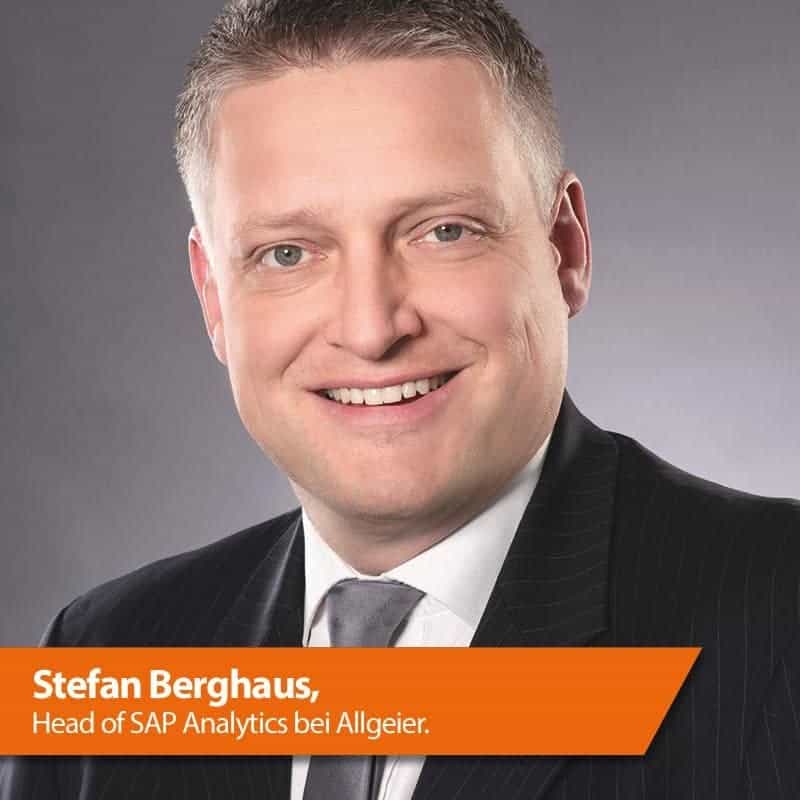Why the conversion to SAP BW/4 Hana is worthwhile


Change of era with added value through BW/4, because the current data warehouse is based entirely on the in-memory database SAP Hana - while BW 7.5 on Hana managed the balancing act between the old and new database worlds.
So far, so good. But does this really give you good reasons to look at BW/4 Hana? Apart from the fact that the data warehouse is SAP's strategic release and only this will be further developed?
We say: Yes! And we want to justify this with the now available release 2.0.
Simplification
One of SAP's core messages is that BW/4 simplifies and reduces complexity. Specifically, it is about limiting the info provider and source system types to those optimized for Hana.
This is an essential prerequisite for the design of a future-oriented data warehouse, in which persistent layers are replaced by virtual layers to increase flexibility and reduce project effort.
Theoretically, this is also possible with BW 7.5 on Hana. However, experience shows that systems migrated to BW 7.5 are very often not consistently converted to the info provider types remaining in BW/4 Hana. This means that the potential of Hana is not fully exploited.
Data Tiering Optimization
With Data Tiering Optimization (DTO), BW/4 provides an advanced function for the management of data along the entire lifecycle. Even with the older releases it was possible to archive rarely used data in Near Line Storages (NLS).
However, this required active management of the data. Not only did it have to be defined for each info provider which data was to be archived. Data archiving processes also had to be created for each info provider, which represented additional effort.
This can be significantly reduced with the help of DTO because the data archiving processes can be dispensed with. Instead, data is periodically and automatically moved to the data stores assigned to the temperature classes defined for each info provider.
Another advantage is that the assignment is made at partition level. This makes it possible to use different temperature classes for one and the same Advanced Data Store Object (ADSO). This is not possible when using NLS.
In addition, already established repositories such as SAP IQ or Hadoop clusters can continue to be operated under DTO, because the table layout did not change when switching from NLS to DTO.
Relocation of functions
Compared to BW 7.5 on Hana, BW/4 moves the execution of more and more functions from the application server to the Hana database. Frequently used functions such as the Top N and Bottom N query conditions are significantly accelerated in this way.
Big Data Integration
When SAP talks about Big Data, it also always talks about the SAP Data Hub as an orchestration solution. BW/4 offers the latest and highest level of integration with the SAP Data Hub and thus simplifies the integration of unstructured data with the structured data in a data warehouse.
SAP Analytics Cloud
One of the most important prerequisites for using the SAP Analytics Cloud is real-time access to the data warehouse. How well this succeeds and how comprehensively the live functions can be used depends directly on the nature of the data warehouse.
While there is no difference between BW 7.5 on Hana and BW/4 in this regard today, the extensive push-down capabilities of BW/4 will also play a role in reporting performance via a live connection.
Release 2.0 not only provides new data warehouse functions. BW/4 also uses version 2.0 of the Hana platform. This means that numerous additional features can be used - for example, for text analysis, spatial and graph processing, or the integration of R scripts.
This allows companies to implement sophisticated analytics topics directly in the data warehouse without having to build additional components or systems.
The way to BW/4
If one is convinced in view of the new functionalities and the strategic positioning of BW/4, the question arises: How does the introduction succeed? Because the path to BW/4 is different from previous BW upgrades and just as different from a migration to BW 7.5 on Hana.
A distinction must be made as to whether one prefers an upgrade of the existing system or a new installation. When upgrading to BW/4, there is a significant difference to previous upgrades: Before the implementation, the data flows must be migrated, for example, to convert Info Cubes and DSOs to ADSOs and multi-providers to composite providers.
This migration can be achieved in the existing system through "In Place Conversion". In this process, the migration tools from the BW/4 Starter Add-on are used to convert one scenario after the other semi-automatically - for example, from the Info Package up to the Multi-Provider. Once all scenarios have been converted, the actual release upgrade takes place.
Before the "in place conversion", the system should be systematically cleaned up. This is not just a matter of reducing the amount of user data as much as possible. It is also a matter of removing metadata that is no longer needed. Suitable tools help to identify the potential.
BW/4 can also be introduced as a new installation. In this case, a greenfield approach can be pursued, in which everything is really set up from scratch. This is particularly useful for installations with a small scope.
A second form of reinstallation is "remote conversion". Here, too, the migration tools are used to migrate scenario by scenario. In this process, the models are migrated and transferred together with the data they contain from the old BW system to BW/4.
A variant of the "remote conversion" is the "shell conversion". The difference: no data is transferred, which is particularly attractive for companies that do not want to use all historical data at restart, but only a selection.
Before implementing BW/4, it is therefore important to identify the path that best suits one's own system and specific conditions. It should not be overlooked that there is also work to be done on the front end - unless tools from the SAP Business Objects BI Suite and the SAP Analytics Cloud are already being used exclusively. This is because, in principle, the use of the old SAP Business Explorer tools is no longer intended.
Conclusion
There is a lot to be said for switching to BW/4: New functions are being developed almost exclusively for the current data warehouse, such as the Data Protection Workbench, which for the first time implements DSGVO requirements in conjunction with SAP ILM.
In addition, the end of maintenance has already been announced for all earlier releases. BW 7.5 on Hana will be supported until the end of 2024, the older releases even only until the end of 2020.
In this respect, every company should check where it currently stands in terms of data warehousing. Depending on the results, it may be time to prepare for the change. After all, the changeover is more than just an upgrade, and the complexity should not be underestimated.
Those who tackle the issue early on can not only plan and implement the rollout in peace. They also benefit quickly from the many opportunities.










1 comment
Payday online
you are in reality a just right webmaster. The web site
loading speed is incredible. It kind of feels that you’re doing any distinctive trick.
In addition, The contents are masterpiece. you’ve done a great task on this subject!